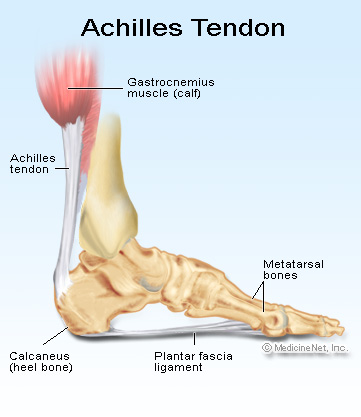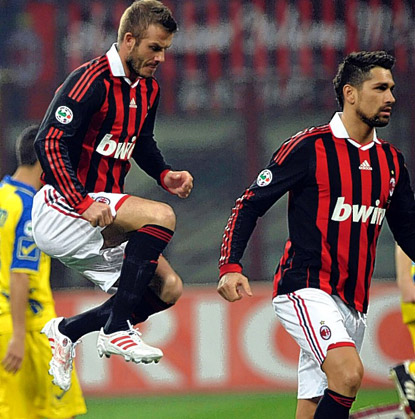This has to be short and brutal. But a ruptured achilles tendon could spell the end of David Beckham’s career. His World Cup dream of representing England four times in a row lies in tatters. The midfielder is flying to Finland for surgery.
The Tendo Achilles (TA) is the powerful tendon (heel cord) that connects the calf muscles (gastrocnemius and soleus) to the heel bone (calcaneus). The Gastrocnemius/ Soleus- TA complex helps in flexing the knee, pointing the foot down, moving your instep. In terms of function, this musculo-tendinous unit virtually allows you to walk, run, and jump.

Elite athletes and cyclists have well defined calf muscles because they need to push down hard every time they sprint or pedal to generate extra-ordinary amounts of force which facilitate those blistering speeds. Depending on the speed, stride, terrain and additional weight being carried or pushed, the TA can be subjected to 10 times the body weight during a sprint or push off.
Tendons are tough, strong bands of inelastic fibrous tissue that connect muscle to bone. They are the body’s strongest connective tissue. The TA’s “achilles heel” is actually a region called the “watershed area” about 2-6 cms away from the heel insertion that suffers from a relative lack of blood circulation. The poor vascularity makes this area more susceptible to the dangers of repetitive microtrauma with a higher incidence of irritation, degeneration, and eventual rupture. (Here is a link to tendon physiology).
The problem Beckham faces is that the TA is liable to re-rupture (5% to 7% chance) and lose valuable connective strength after surgical reconstruction. There are marked deficits in the strength of push off post surgery of a ruptured TA which improves through rehabilitation but still remains significant six months later.
Leonardo’s decision to play Beckham through 90 minutes might have hastened the injury. Instead of introducing him as usual as a substitute to improve the passing game and the team’s set piece ability. Such injuries are commonest in athletes with insufficient levels of conditioning. Sudden changes in the level of activity can also cause the TA to rupture. Beckham’s history of chronic ankle instability precluded him from extended minutes of playing time.

Perhaps sensing this was one of the rarer opportunities to impress Fabio Capello for an England spot, it was apparent that the AC Milan midfielder also applied himself vigorously. He appeared to get forward more and there was an occasion when Beckham scrambled almost in striker fashion to latch onto a Ronaldinho pass. However, his injury came from no contact as the midfielder suddenly pulled away in pain while standing. This gives credence to his TA rupturing through a cumulative process of repeated stress and not to a single traumatic event.
At 36 years of age, Beckham’s recuperative powers are not that of a younger athlete. It could take 6 months to a year for him to come back to elite levels of athleticism. With the concomitant danger of re-rupturing the TA and drop off in functionality, he may never attain that level. Beckham has always pushed himself well beyond his physical capabilities but this time the spectre of his long and storied playing career coming to an end is very real.
We might talk about this in a dry and objective fashion but for someone who obviously loves the game like Beckham, this must be agonizing. So we at Soccerblog wish him full speed on the road to recovery.